Marje Remmet: Interview with Aili Eistrat
AILI EISTRAT - long-standing teacher of Estonian Dance in London -
Aili Eistrat was taught dancing by Ullo Toomi from 1934 to1944) under the umbrella of the All-Estonian Youth Association: Tallinn Branch. She later learned from Anna Raudkats, who was the teacher of physical education at the Business School in Tallinn. Mrs Eistrat was a dance teacher at the LES during the years 1947-1997. In addition, she led the gymnastics group from 1966 into the 1980’s and learned to play accordion for folk dance performances. She was a board member of the Estonian House London, the editor of the Estonian Newspaper „Hääl“ (Voice) from 1993 to 2008 and the recipient of three medals of honour in recognition for services to keeping Estonian Culture alive. Both her son Juhani and daughter Karin have been teachers of the folk dance group Aili Eistrat remembers Ullo Toom's golden words to this day: "A decent folk dancer must dance with inner tension."
London Estonian Society folk dance group
London Estonian Society folk dance group started their gatherings in the beginning of 1940s. Little to know is fact that Estonian writer Arved Viirlaid (1922-2015) was the one who started folk dance gatherings in London.
In 1947 Aili Eistrat arrived to London and took lead of the group.
Dancers had rehearsals in various places in London, including Embassy of Estonia and Estonian House - which they had to give up because of the noise the dancers were doing.
Group had many appearances in London, England and Ireland. Even at the Royal Albert Hall in 1977 Song and Dance Gala Festival to celebrate the twenty fifth anniversary of the accession to the throne of her majesty Queen Elizabeth II in 1977. Group was presented as Smiling Estonians.
Group operated til 1990s. In 2011 was group revived and ever since the gatherings are once a week at the Estonian House in London.
Folk Costumes
Unfortunately, at the time there were no fabrics available at the stores. However, many Estonian refugees had to work on simple jobs at guesthouses, hospitals or poor mansions, where they found plenty of white bed linen.
Estonian girls pooled what little money they had to buy a sewing machine. At nights, the girls, one of them Aili, sewed a number of folk shirts and other things from the white bed sheets sneaked from their jobs. Later, when white fabric was available in stores, new shirts were made as the ones from old bedsheets wore out quick.
Aili copied the patterns from the book „Eesti Rahvarõivaid“ (Estonian Folk clothes), which was held in the library in Estonian Embassy. Later, the Ambassador’s wife Alice Torma, who was the owner of the book, gave it to Aili.







